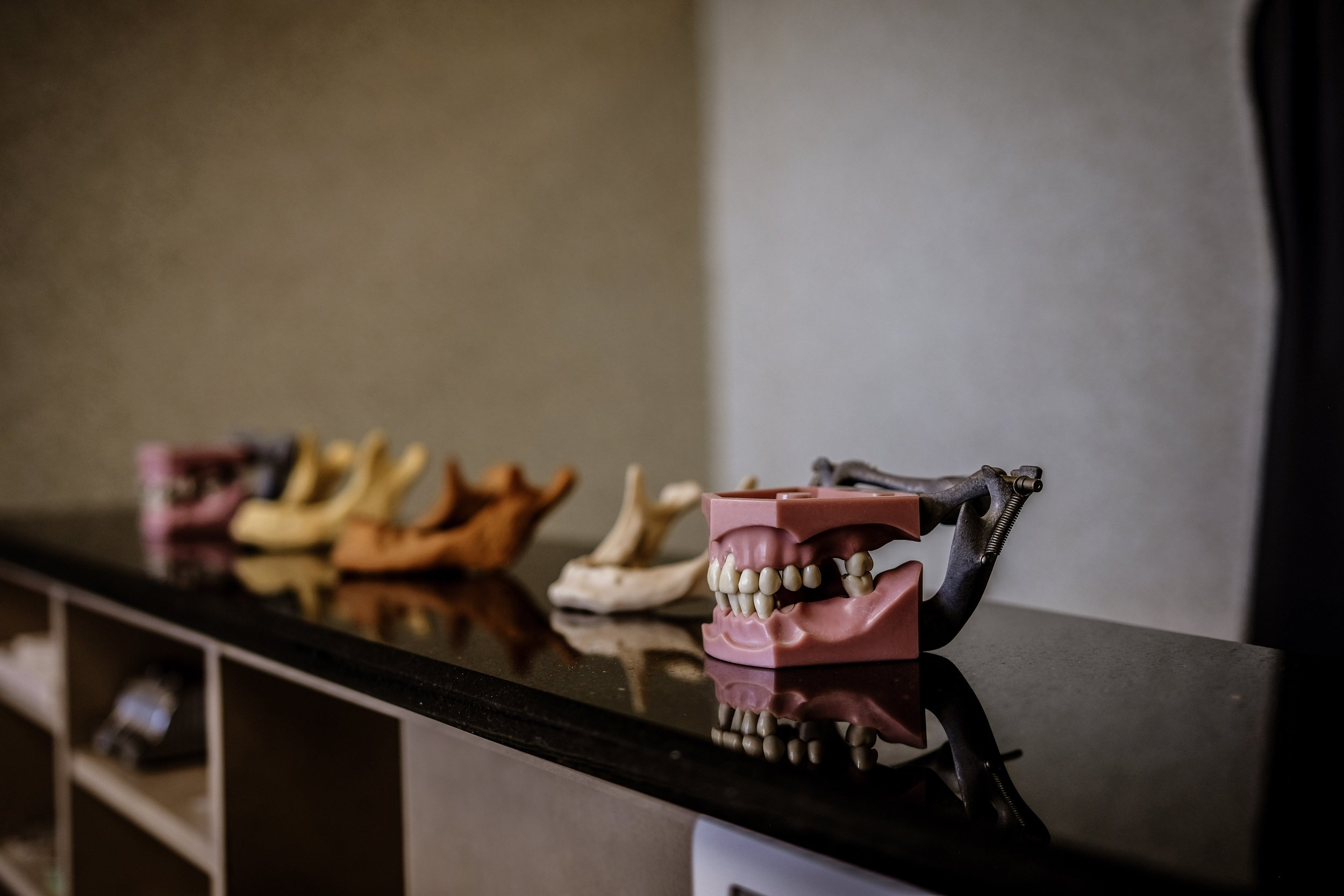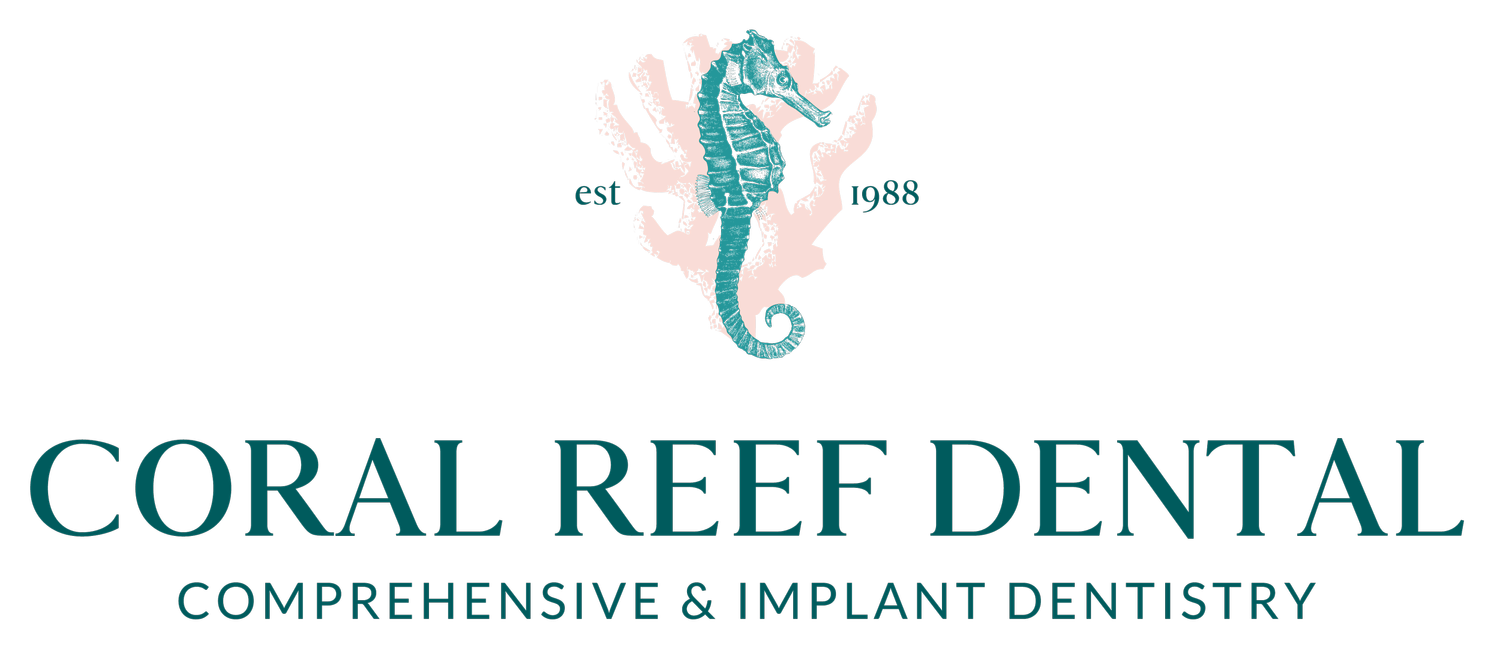
Periodontal Treatment
in palm harbor
Common Symptoms
Some common symptoms of periodontal (gum) disease include:
Blood on your gums after brushing or flossing.
Swollen and tender gums.
Gums darken and appear “redder” than usual.
Pain when chewing.
Gums “shrink away” i.e. recede from teeth.
It is particularly true with gum disease that early detection and treatment, i.e. periodontal therapy, can prevent far more serious, complicated and costly care later on.
Gum Disease Treatment
As an experienced dentist in Palm Harbor, we know firsthand, the single largest cause of tooth loss in adults is periodontal disease (gum disease). It often results from excessive plaque buildup (bacterial film) leading to infection and inflammation of the gums, i.e. Gingivitis. Regular checkups and cleaning will assist in the prevention and early diagnosis of this gum disease, which is key to periodontal treatment should it arise. Contact Coral Reef Dental in Palm Harbor for a checkup, today.
Up to 95% of adults have some form of Gingivitis, the most common form of gum disease. Preventative dental care centers around good, daily oral hygiene, particularly flossing, which prevents plaque buildup. Symptoms of Gingivitis include red, swollen gums that bleed easily but may not necessarily cause pain or discomfort.
If left untreated, Gingivitis can progress to Periodontitis, an advanced form of gum disease which often results in numerous, more serious oral health problems, including tooth loss, requiring far more advanced and often invasive treatment.
While most gum disease is caused by excessive plaque (bacteria) buildup followed by infection, other factors contributing to or causing periodontal disease (gum disease) may include:
Genetics: It is estimated up to 30% of people may be predisposed or susceptible to gum disease.
Pregnancy, Menopause: Women may be more susceptible to periodontal disease while pregnant or during menopause.
Diabetes
Grinding Your Teeth
Stress
Smoking & Tobacco Use
Regardless of the cause, determining the existence and severity of periodontal disease requires an examination by a dentist, including x-rays.
Periodontal treatment for the most common and early stages of gum disease are simple and generally requires no invasive procedures. In most cases treatment for early-stage gum disease can be accomplished in one follow up visit to the dentist, following an initial examination and diagnosis. For further information on the most common diagnosis and treatments for the various forms of gum disease refer to the Course of Treatment section below.
Course of Treatment
The first step to care for this problem is to have an examination. Treatment of gum disease is almost always done in a follow-up visit given the vast difference in time required to do the most common treatment, various type of cleanings. Advanced stage gum disease will likely require multiple visits.
If you feel you may have gum disease or wish to undertake a course of preventative care or treatment, then you should take advantage of our “Special Offer” of $96 for a Comprehensive Examination and Consultation. The examination provides a series of five (5) x-rays, facial photographs, and an examination and consultation meeting with us.
We at Coral Reef Dental pride ourselves on our ability to schedule appointments quickly and promptly, regardless of whether a patient is new or returning.
The most common diagnosis and treatments for different stages of Gingivitis and Periodontitis follow.
Gingivitis with no bone loss.
Treatment is a routine cleaning, generally forty-five minutes to one hour.
Recommended aftercare is an examination and cleaning every 3 to 6 months and good daily oral hygiene.
Gingivitis with minimal to no bone loss due to Periodontitis.
Conditions include heavier tarter and plaque buildup,
Treatment is a periodontal, “full mouth” cleaning, with debridement. This treatment requires more time than normal cleaning and is generally done in a separate visit, without other procedures. Recommended aftercare is an examination and cleaning every 3 to 6 months and good daily oral hygiene.Mild to moderate Periodontitis w/ mild to moderate bone loss.
Conditions/symptoms are heavier to severe tartar and plaque buildup, and possible loosening and/or movement of teeth, and in some instances discharge from infection. Generally treatment consists of a series of deep cleanings, often referred to as “root plane and curettage”, with local anesthesia, which can be done with sedation if the patient desires. In more advanced cases a concentrated local antibiotic (not a systemic antibiotic) may be used. Recommended aftercare is an examination and cleaning every 3 months for one year and good daily oral hygiene.

While the treatments described above are sufficient to treat most instances of gum disease, when left untreated, and if other health issues exist, severe complications from gum disease can result.
While there are too many forms of advanced gum disease to discuss in this forum, the result can be the destruction of both tooth and gum tissue in affected areas. In these instances reconstruction is required to remedy the situation.
As stated earlier it is true with gum disease that early detection and treatment are particularly important in preventing often avoidable, extensive dental care.
Aftercare &
Preventative Care
The most effective forms of gum disease prevention and follow-up care can be accomplished by doing the following.
Brush and floss daily.
Have a dental exam and cleaning twice a year.
If symptoms occur, gums that are red, swollen or bleeding, seek care immediately to prevent the onset of more serious complications.


